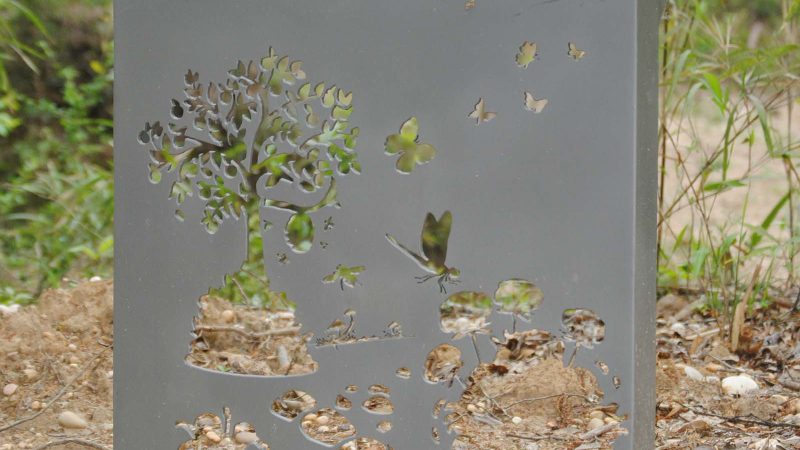Craig Wedderspoon’s artwork was found in many public spaces in 2021, when the Tuscaloosa Parks and Recreation Authority staff reached out to him about a new project close to home.
Would Wedderspoon, professor of sculpture, and his students in the department of art and art history at UA create work complementing the Van de Graaff Park planned eco trail?

This wasn’t the first time Wedderspoon and his students created local public art. The “Amaryllis” sculpture in Monnish Park and the small monster statues dotting the Riverwalk and downtown Tuscaloosa are the result of the Public Arts Initiative.
Wedderspoon offered the eco trail opportunity to his Art 222 class in beginning sculpture in spring 2022, many of whom were not sculpture majors.
“I bring these projects to the class, and they choose which they want to work on.”
The six students who chose the eco-trail project started with a write-up — sketches and concept designs. The chosen designs were sculpted in clay. The next step was making a rubber mold and casting it in wax. The wax version was then encased in a ceramic shell made of colloidal silica and silica sand.
“It’s quite an involved process,” Wedderspoon said. “The shell is fired in a kiln and the wax melts off. Then we cast the melted bronze in the shell. Then we break off the shell, clean the sculpture and put on the patinas and finishes.” The bronze reliefs were placed on quarter-inch sheets of stainless steel.
Creating public art is 10 times the work students think it will be in the beginning, Wedderspoon said. “Sculpture is a physically intense process. We work hard, sweat and get dirty.”
The time a sculpture takes depends on the diligence of the students. The students finished in December 2022 and the eco trail officially opened in April 2023.
Besides the practical skills the students learn, such as how to swing a hammer or use a kiln, creating a piece of public art teaches them what to expect as artists outside the studio.
“In the real world, sculpture has a deadline. People in these communities are depending on it and many people are working on it. It’s not just about us,” Wedderspoon said.
Public art benefits the community, but also the student-artist, he said. “They see that they have made a mark on something bigger than themselves, something permanent and real.”



